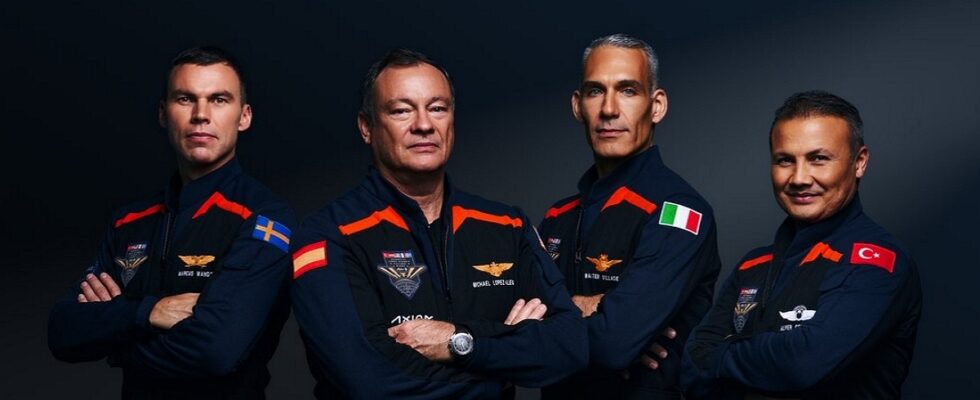After months of training and detailed planning, the most international crew to ever visit the International Space Station blasted off aboard a SpaceX Falcon 9 rocket to kick off a mission to search for two weeks. This is the third fully commercial flight to the orbital outpost.

Europe made history by sending its first all-civilian astronaut crew to the International Space Station on a private space mission. The four astronauts, representing Spain, Italy, Turkey and Sweden, were launched aboard a SpaceX Falcon 9 rocket from Florida.
The European crew, led by Spanish astronaut Michael López-Alegría, a former NASA astronaut with dual Spanish and American nationality, will spend two weeks aboard the ISS, where they will conduct more than 30 scientific experiments, ranging from stem cell research to biological processes in microgravity.
Also read – SpaceX transmits a real SMS by satellite for the first time
Who are the astronauts on board?
In addition to Michael López-Alegría, the other three astronauts are Walter Villadei, colonel of the Italian Air Force, Alper Gezeravcı, veteran of the Turkish Air Force and first Turkish astronaut, and Marcus Wandt, aviator and Swedish entrepreneur.
This mission is part of a new era of commercial spaceflight, where countries and individuals can purchase seats aboard private spacecraft, instead of relying on publicly funded rockets and vehicles.
Axiom Space, the American company which organizes the flight, plans to offer more missions of this type in the futureas well as developing its own space station modules that will attach to the ISS and ultimately form a separate orbital outpost.
This mission also gives a boost to Europe’s space ambitions, since there are no fewer than three European passengers on board. Europe does not currently have its own access to space, after the retirement of the Ariane 5 rocket and the failure of the Vega C rocket in 2022.
Europe also lags behind the United States, China and Russia when it comes to human spaceflight, so such a mission is great news for the ESA. It now remains to be seen whether or not Ariane 6 will succeed in bringing astronauts to the Moon in the coming years.
